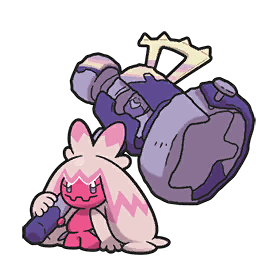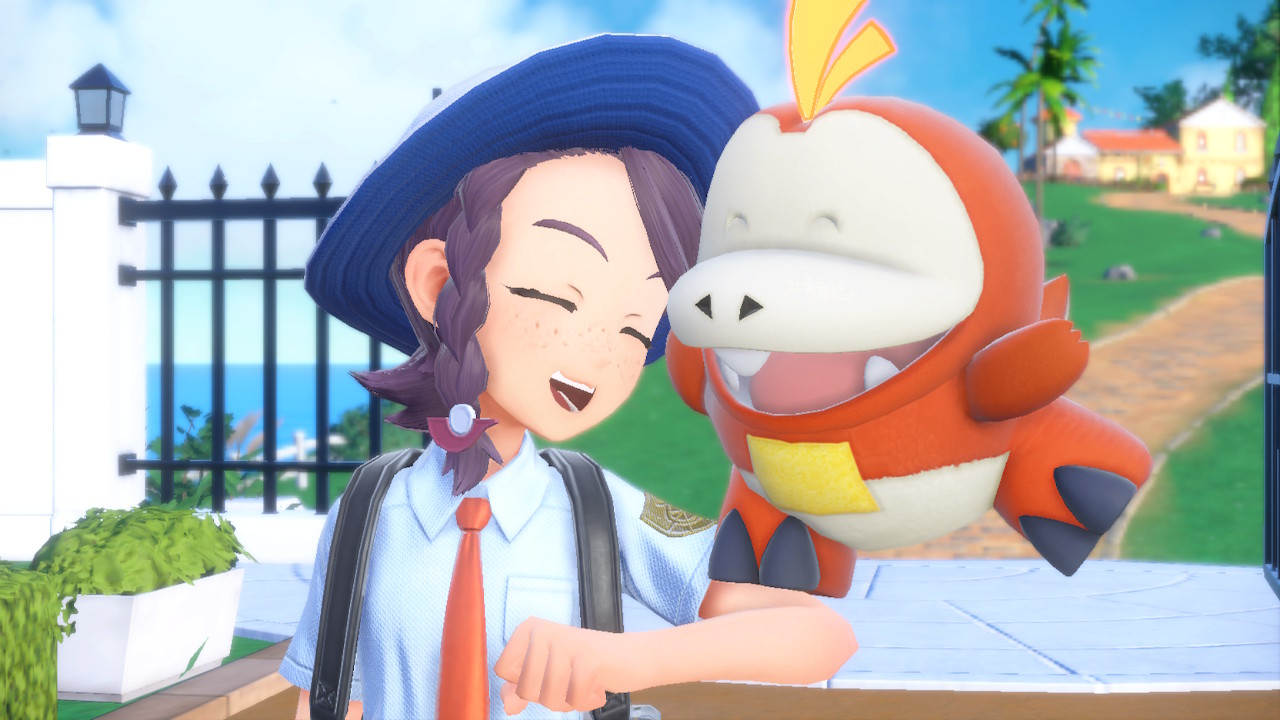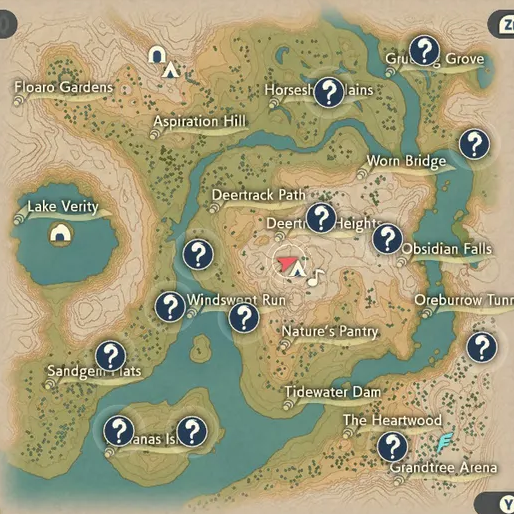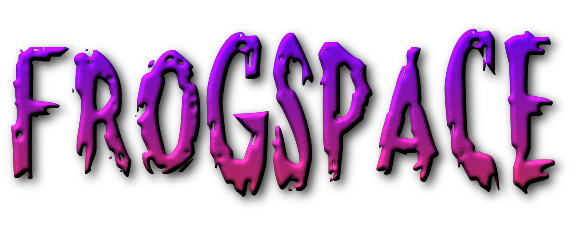

Pokemon Scarlet and Violet
Published by Game Freak for Nintendo Switch, originally released November 18th, 2022. Directed by Shigeru Ohmori. Reviewed February 11th, 2023 by WEBMASTER FROG for FROGSPACE.
This is a strange game to be my first review because I have to admit that I’m a massive fan of the Pokemon series. There’s a formula to pretty much all of the mainline Pokemon games that makes them inherently enjoyable to me, even at the series’s worst, the games are still fun to play through- even entries I consider bottom-of-the-barrel like X/Y and Diamond/Pearl I’ve played multiple times. Half of this review is going to be me breaking-down what I find so alluring about the series formula, and the other half is going to be me talking about what makes this specific entry so interesting. I think Scarlet and Violet in particular are a wonderful encapsulation of what makes this secret formula so delightful, and shows fascinating shifts in tradition, for better and for worse.
First, a brief aside. The games have launched as, and continue to be, a buggy mess as of writing (January 2023). This is an unacceptable state for a full-priced video game to release in, regardless of franchise, but especially when said franchise is the second-highest-grossing media franchise in the world. I would encourage anyone interested in the game to watch gameplay and make your own judgments over whether you find the game to be in a playable state according to your personal tastes. Personally, the glitches and visual bugs did not dramatically impact my experience beyond the first few hours, but I know issues such as low framerates and stuttering may make some players nauseous, or may simply be too distracting for them to enjoy the rest of the game. Make your own decisions, and don’t let the zeitgeist of funny glitch compilations replace your own personal judgement. Piracy + emulation is also always an option and very cool.
The Pocket Monster Delight
So, what is it that makes Pokemon games so appealing? It comes down to a lot of things, as it turns out! You don’t get this big without appealing to a lot of different people for a lot of different reasons. I don’t intend on writing multiple Pokemon reviews on this site, at least for the main series of games, as while I adore the series there isn’t a lot to say on a per-entry basis besides “this one has a better story”, “this one has better designs”- the core systems are all pretty static, even in the more adventurous entries like Crystal and Legends Arceus, so I'm going to try my best to be comprehensive here.

As an RPG, there aren’t a lot of games out there that parallel Pokemon’s robust customization options. While many games like Fallout: New Vegas or Dark Souls allow for you to customize your player character’s stats, gear and appearance, none have the vast potential of a Pokemon party. The very nature of a Pokemon party encourages self-expression through the game’s systems. Players will pick their team based on any number of criteria from what’s cutest to what’s strongest, and all of which work towards making that player’s journey truly feel like their own. The old idea people love to throw around that “every Pokemon is someone’s favourite” really is a massive factor in the series’s wide appeal. Each and every Pokemon stands on its own as a character, and could carry their own game franchise. The sheer variety and potential of the bestiary makes the games feel impossibly large and gives great importance to a trainer’s choice to add or remove a Pokemon from their party.
I’m not joking when I say I mulled-over swapping my team’s Skeledirge out for a Wugtrio during my playthrough of Scarlet for a solid 10 minutes. The best, most resonant moments are the ones formed between the player and the game’s systems, and these moments are abundant in a Pokemon game. One singular Pokemon is like a Nintendog you can send into a battle with the depth and customization of an MMO character. A team of Pokemon is like a cyber herd of crystalized player-investment. Every choice the player makes leads to them growing more and more attached to their team of little freaks- naming, petting, grinding, training, picking out juuust the right moves. It all makes you more and more attached to the team you’re building, and all the more invested in the game as a whole.
This depth is nothing without an engaging game to compliment it. Thankfully, Pokemon has struck a great balance between accessibility and mechanical nuance. It’s a tough line to walk, making a game easy enough that I could beat Diamond at 7, yet feel engaged playing the remakes competitively at 21. For those that want to dig deep enough, there’s a wealth of mechanical knowledge to be found and refined within the game’s systems, from the fan-created and endlessly fascinating Smogon community, to the official VGC competitive format, which despite relatively minor rule differences feel like massively different games.
The games having a campaign easy enough for a 7 year-old to beat is no coincidence. While many fans clamour for a ‘hard mode’ (myself included) and even go as far as to create their own custom rulesets like Nuzlockes and Kaizo ROM hacks, the easiness is assuredly intentional. Pokemon is a power fantasy, as are many games, though Pokemon is a bit more blunt about it. You’re a kid who just picked-up their first Pokeball a few hours ago in a world so devoted to Pokemon that their entire society revolves around it, and are able to defeat the most heinous super villains and the supposed greatest trainers of all time with your team of 6 Pokemon that you picked-out because they all have cute noses, and then named them all after different kinds of pasta. Every NPC, every piece of dialogue, every moment is there to make Pokemon battles seem like the coolest thing ever and the most challenging thing ever, and you’re there being patted on the back at every turn for hitting ‘Flamethrower’ 6 times in a row. As an adult, it feels a tad patronizing, but as a kid I believed it. Even today, I appreciate the quaintness of it, though. As with any RPG, you have to let yourself get immersed in the role- yeah, sure, maybe I AM the greatest trainer to exist, and maybe Farfalle the Flareon IS the strongest Pokemon in the world, sure.
Pokemon lives and dies by, well… its Pokemon. If the series can’t get you hooked with a handful of guys you think are cool and the idea that Pokemon is the greatest thing to ever bless the earth, the series isn’t much to sneeze at. Personally, I’ll happily latch onto that hook though. There’s a reason Pokemon always tops lists of “the best game worlds to live in”, it’s an ultimate escapist fantasy, and one I adore immersing myself in every time a new entry comes around.
What’s Weird About This One?
Pokemon is a series that is constantly evolving, though often the changes come in subtle ways. Pokemon’s design has felt very safe for the past 20 years. Why take risks when you know the tried-and-true method works, right? Scarlet and Violet is a jump from the restricted wild area of Sword and Shield and a massive sprinting leap from the linear formula we have come to know from recent generations. A truly, actually open world Pokemon game. But this shift wasn’t sporadic, in fact, I see it as a return to form.
The first two Pokemon generations were incredibly open, in terms of world and progression. I think a lot of current Pokemon fans forget this, or were never aware of it in the first place: Pokemon Red, Blue, and Yellow were non-linear games, where after beating the second gym and obtaining HM cut, the entire game opens-up to such an extent that you can make it all the way across the map without challenging another gym leader, and obtain 104 of the available 150 Pokemon in the game. In this way, the original Pokemon games play a lot more like adventure games than your traditional linear RPG, where the player must obtain key items and HMs in order to progress beyond different roadblocks at their own discretion, and ultimately are free to move through the game however they see fit. This was seen again in generation 2, where after progressing past Goldenrod, the Johto region opens-up considerably for the player, and upon defeating the Elite 4, the Kanto region becomes an entirely open playground for exploration. This openness was dropped in Generation 3, and the mainline games have been linear since, until Generation 9, Scarlet and Violet.
Game Freak are not risk takers when it comes to Pokemon. The idea of re-introducing open aspects to a Pokemon game has been played-around with since Sword and Shield released in 2019, which brought with it the “Wild Area”, an open area which, while giving the player the ability to freely roam the space, provided no freedom in progress- the game was still linear in that the story and objectives were required to be finished in a set order. Realistically, the Wild Area wasn’t much more than a giant Route 1. Since then, we have seen continued, rapid progress with the idea.

Sword and Shield’s Crown Tundra DLC was very clearly a testing ground for much of what we see in Pokemon Scarlet and Violet. There, we see three individual stories which the player is free to engage with in any order they see fit. The Crown Tundra is a cohesive open world, with towns and other landmarks such as the Crown Shrine and Dyna Tree Hill being integrated directly into the map, unlike the isolated areas which make-up Sword and Shield’s base game’s towns and routes. Similarly, Scarlet and Violet opens-up tremendously, shortly after the game begins, with three individual stories that the player can pursue in whichever order they see fit, and even take-on each individual mission within those stories in any order they wish. With the exception of the game’s main hub area, Mesagoza, the entire game world is cohesive, with cities and landmarks being integrated into the rest of the world map.
This sense of openness is rarely found in games. While many will have an open world, the openness is in space alone, and not in progress. In GTA V, for instance, the world can be explored freely at any time, but this exploration has no impact on one’s progress because ultimately the player must return to the linearity of the story to progress in any sort of meaningful way. You really only see this sort of freedom of both area and progression in games that are lauded for their openness like Zelda: Breath of the Wild or Elden Ring. To see this idea return to Pokemon, in such a dramatic fashion truly blew me away. As I explained before, Pokemon is already a game played on such a personal level, to add this element of freedom in progress made my journey through the game feel wholly and uniquely my own. After beating Scarlet, I saw people mapping-out the “correct” way to move through the game so that each major opponent would meet your current average level. What’s incredible to me is that, not only did I take an entirely different path to these guides, but I never once felt like the game was any more unbalanced than your more standard linear Pokemon. In fact, I found the openness welcomed me to experiment more with my team, resulting in me trying different team compositions and play styles, and catching wild Pokemon under my team’s level-average, resulting in me never having a (major) battle where I completely swept-through the opponent’s team.
It’s curious, then, that despite this fascinating open world, the Paldea region the game takes place in feels devoid of personality. There were a handful of moments where I found the spatial design to be quite beautiful (Tagtree Thicket, Montenevera, Area Zero) but as a whole, the open world felt empty. The poor graphics certainly didn’t help with this- there were parts of the map that didn’t just feel unoptimized but unfinished, with jarring, muddy, tiling textures and sparse decoration besides grass or rocks. It’s hard to immerse oneself in the world when the spaces you inhabit are so poorly manicured. This is especially true when it comes to cities, which *should* feel the best yet, as they seamlessly blend into their surrounding environments and integrate themselves fully in the region, and yet they feel like some of the most lifeless parts of the entire game. Mesagoza, the hub town, especially feels devoid of life. Despite being inhabited by so many NPCs, and being so large that it needs to be loaded separately from the rest of the map, the city is so excessively expansive and slow to navigate that I dread every time I have to pass through it.
Sometimes it looks great!




Sometimes not!




Environmental design takes a larger role in Pokemon games than I think most people realize. For the original Red, Blue, and Yellow, just having a world that big that you could fit in your pocket was more than enough, and as the series progressed, so did the world games took place in. My favourite Pokemon games (Black/White, Heart Gold/Soul Silver, Sun/Moon) are the entries in the series with the most refined environments.Pokemon’s historically meticulous and refined environmental designs help ground the entire experience into a world that one feels they could really immerse themselves and roleplay in. Something I have always loved in games is just wandering, and the wander potential in pretty much every Pokemon game is huge- but ironically not in Scarlet and Violet, despite having the most surface area of any game in the series, wandering begins to feel more like slogging as you make your way through your third identically textured and decorated cave in the span of 30 minutes. This game would have benefitted massively from decreasing the world map’s size by about 50%, and giving the designers time to properly go over every inch of the open world, rather than giving it a glance and moving on, without the time to go back and give it a second pass. Pokemon falls apart when players stop caring about the world, and once I hit the post game, I didn’t just stop caring, I started actively disliking roaming the Paldea region.
That’s not to say I dislike the postgame, though! I really enjoyed the raids I played, though they frequently had connection issues. I’m unsure if this was a WI-FI issue or a server issue, so I won’t pass too much judgement there, though. The competitive scene has also been great so far this generation, lots of weird, broken new Pokemon to play around with, and the new generational gimmick, Terastalization, is all-in-all pretty balanced too.
Whew I’m getting ahead of myself here! I forgot about the thing that comes before the post-game, the game-game. This is what really blew me away- the game’s story. The combination of freeform exploration and story pacing, combined with some of the best writing in the series left a seriously strong first impression on me when I first finished the game. All three individual storylines culminated in a truly incredible final act of the game, where allies from all three paths team-up to help you traverse a genuinely incredible final area that had me awestruck. I’ll avoid spoiling anything here and just say the revelations that occur one after another in that final segment of the game went weird places I really appreciated. Somehow the game showed enough restraint to save a whole new sort of Pokemon bottled-up until the very end of the story.

These games really did lend themselves well to the “new guy discovery” factor of Pokemon. One of the greatest delights of any Pokemon fan is seeing a new guy for the first time, and the open world made it so each discovery felt all the more exciting, as you see something strange in the distance and run towards it in excitement. It helps that the vast, vast majority of the new Pokemon have excellent designs. This has got to be one of my favourite generations for new guys since Generation 5.
So Where Does This Leave Us?
When I first talked about this game with my friends, I said it "felt like a student game", and I stand by that. It feels like a game that was trying something new, had a lot of passion behind it, and innovated in some super interesting ways, but fell short not out of incompetence, but due to lack of time, resources, and experience. I will always respect a game for doing something new, and while the concept of an open world certainly isn't anything new, the fact that the open world actually serves a purpose beyond being a glorified Peach's Castle hub world really impressed me, and showed that the team wanted to take their time and make sure they were doing it right instead of messing it up and setting a standard they couldn't back-down from. Everything in Pokemon is persistent, they introduce a mechanic once and for the next decade fans will beg for it to come back. If they got something as massive as an open world fundamentally wrong, it would be hard to walk back on. The bones are there and show real promise, even if there isn't much meat on them this time around.
I can't recommend these games unless you're a big Pokemon fan like me, or you have a thing for mildly experiemental jank games, but I also think it's wrong to just outright dismiss these games. This is the most Pokemon has shown true innovation in years, and it's been a long time coming. The Pokemon formula remains strong, and I think if they stay true to what was introduced here, the series is only going to get more interesting as time moves on.

